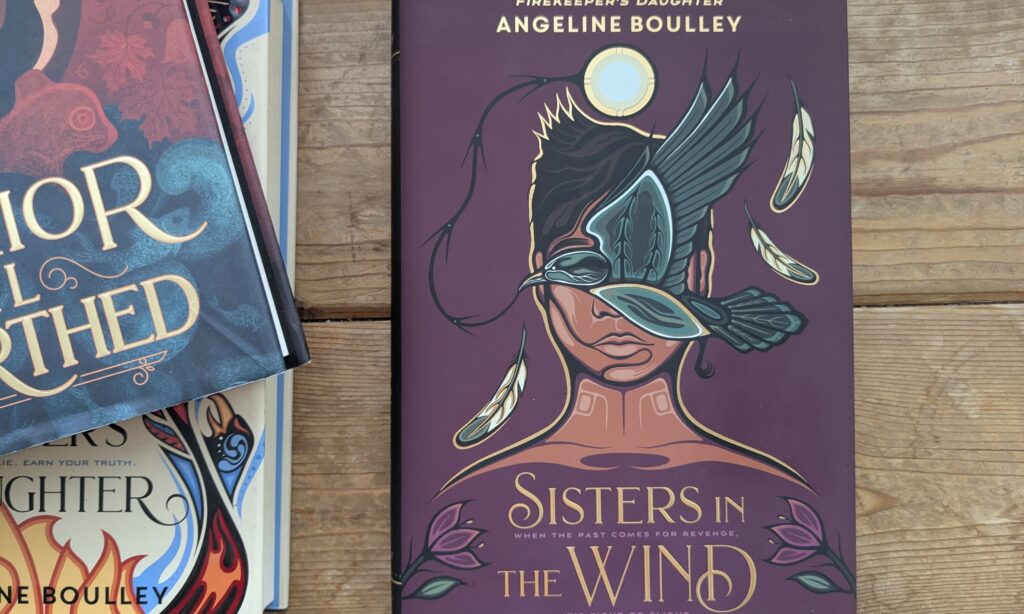“Native families are like onions – rough looking on the outside. People want to peel the outer layers and toss them away, as if they have no value. But each layer is protecting the next, down to its innermost core. That green center, where the onion is sweetest, that’s the Native child. Surrounded by layers of family and community.” – Jamie
When it comes to truth and reconciliation, we want to believe that we are well on our way. That we’ve come so far. Author Angeline Boulley continues to push us to see otherwise. In her third novel, Sisters in the Wind, Boulley brings us back to her Ojibwe community in Michigan’s Upper Peninsula, this time into the world of foster care.
Lucy Smith is a teenager in the foster system, following the death of her father. Boulley wastes no time hooking us, when Lucy, now having been in the system for five years, meets Mr. Jameson, an attorney who is working on a “special project.” Foster care has quickly taught Lucy to remain vigilant, but despite her skepticism, she is pulled into Mr. Jameson’s world. Mr. Jameson and his counterpart, eager to take care of Lucy, reveal truths about her heritage: she is Ojibwe and has family and a home waiting for her on Sugar Island. Unfortunately, Lucy’s past is full of secrets and danger, and returning to Sugar Island is not as straightforward as she or her new friends had hoped.
Boulley takes us through a suspenseful examination of the harm caused by a flawed system. Drawing on the theme of fire, Sisters in the Wind is written in five parts, with the first three titled according to the “stages of fire growth: Incipient, Growth, Fully Developed, and Decay…” While this theme speaks to Lucy’s story and the experience of being a foster child, it also provides a metaphor for our experience. Every page turned fuels and increases our engagement, ultimately making the book impossible to put down.
Boulley writes that “There simply are too few stories told by and about Indigenous girls and women, especially from a contemporary viewpoint.” As in her previous novels, Boulley uses the characters of Sisters in the Wind to vividly portray human imperfections, particularly from the perspective of Indigenous girls and women. Coupled with nuanced teachings that remind us of the story’s proximity to real-world experiences, Boulley widens our perspective regarding difficult topics and has adeptly connected residential schools, the 60’s scoop, and the present-day foster system.
Like that onion in the above quote, every novel that Boulley writes is a layer of Ojibwe “family and community.” Each character holds a valuable place in the larger story, and while the three novels (so far) can be read in any order, they are much richer as a layered collection.
Thank you to NetGalley for providing an Advanced Reader Copy of Sisters in the Wind, and miigwetch to Angeline Boulley for continuing to teach us through story and sharing your important perspective with the world.
Content Warning: depictions of child sex trafficking, child abuse, teen pregnancy, explosions and bombing, ableism, anti-Indigenous racism and colorism, hospitalization, gun violence, and death with mentions of police brutality, genocide, colonialism, incarceration.

